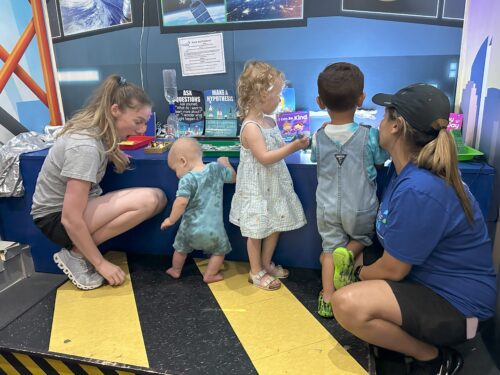Studies reveal that when children have fewer toys, they engage in deeper, more imaginative play. A University of Toledo study found that toddlers in a four-toy environment played twice as long and with greater complexity than those surrounded by 16 toys.
– Shortened attention spans
– Overstimulation and stress
– Reduced creativity and problem-solving skills
Instead of focusing on quantity, parents can embrace quality and intentionality in gift-giving.
1. Adopt the Four-Gift Philosophy
Give “something they want, something they need, something to wear, and something to read.” This approach keeps gift-giving balanced and practical while reducing clutter.
2. Choose Experience-Based Gifts
Experiential gifts, like memberships to Houston’s museums, zoo passes, or art classes, create memories and support learned skills. These gifts reduce clutter and strengthen family bonds while supporting cognitive and social development.
3. Give a Family Gift
Board games, science kits, or a family cooking class encourage collaboration and STEAM learning at home. These activities align with Collaborative for Children’s mission to promote problem-solving and creativity.
4. Create Heartfelt Gifts
Personalized gifts, such as a family recipe book or a photo album, teach children the value of tradition and gratitude.
5. Focus on One Big Gift
Instead of multiple small items, consider one meaningful gift that supports curiosity, like a building set or a coding kit. These toys encourage sustained engagement and critical thinking.
At Collaborative for Children, we help parents turn everyday moments into learning opportunities. Through our Centers of Excellence, families access certified early childhood educators and STEAM-based curriculum that prepares children for kindergarten and beyond.
For families who can’t reach a center, our Collab-Lab mobile classroom brings hands-on learning directly to Greater Houston neighborhoods.
– Build early literacy and numeracy skills at home
– Foster social-emotional development
– Create intentional play environments that support brain growth during the critical birth-to-five years

Q1: Why is too many toys a problem for young children?
Too many toys can lead to overstimulation and shorter attention spans, reducing the quality of play and creativity.
Q2: What are examples of experience-based gifts?
Museum memberships, art classes, zoo passes, and family outings are great alternatives to traditional toys.
Q3: How can Collaborative for Children help parents during the holidays?
We provide resources, workshops, and mobile learning labs to help families create intentional, educational experiences at home. Also, download our iWonder Parenting Handbook.